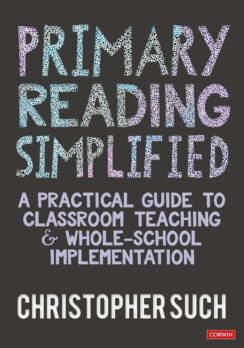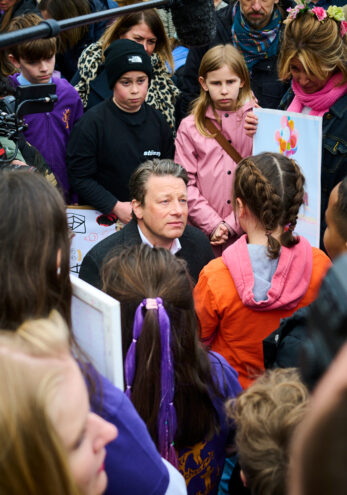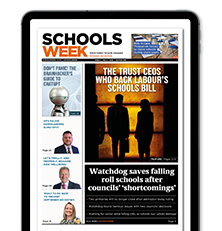Publisher
SAGE
ISBN 10
1036201414
Published
27 Jan 2025
I’m going to begin by saying I was already a huge fan of Chris Such’s work. I loved The Art and Science of Teaching Primary Reading, and I was excited when I learned Primary Reading Simplified was underway. So I was pre-disposed to like it, an that’s how it worked out, but not for want of trying to remain critical in my reading.
So much for the question of impartiality. I know some readers of this review may come at this from a different perspective, and I’m well aware that the discourse about reading can be heated. However, I don’t think Such will disappoint with this new addition to the conversation, albeit that he is himself less impartial with this offering.
Whereas Such’s aim with his first book was to give a bird’s eye view of the reading landscape, allowing people to make their own decisions around what may or may not work best in their context, Primary Reading Simplified is unabashed in presenting his preferred approach.
Having said that, this is an approach rooted in a range of research and a wealth of classroom experience.
The book begins by taking us on a journey through the processes of reading. Importantly, it tackles misconceptions about comprehension early on, leaving the road clear for the delicate balancing act that follows.
Such recognises that reading is a complex beast. He acknowledges that teachers and leaders make a range of choices informed by a sometimes bewildering array of inputs. What he encourages us to do is think deeply about what underpins these choices in order that we might make better ones.
To help us in the effort, and before skilfully breaking down this complexity, he urges to stop participating in the ‘mass delusion’ that teaching comprehension is a matter of transferable skills. This frees us to embrace the complex nature of learning to read and to be confident to ‘teach accordingly’.
This could make reading Primary Reading Simplified a little uncomfortable for leaders and policy makers who prefer to work in absolutes, especially when Such challenges the practice of externalising comprehension with written comprehension questions. Equally, some may breathe a sigh of relief.
There are plenty of opportunities to think deeply about our own approaches
Either way, this book never disparages anyone’s efforts. Instead, it clearly explains what structures and approaches actually work to support reading development.
Controversies aside, the book’s subheading states that it is a ‘practical guide’, and so it is. Every page provides clear and precise details about how to bring reading to life in the classroom.
It includes advice on the relationship between reading and spoken language, morphology, phonics and fluency, so there is something here for every classroom. More than that, it cleverly offers two routes through the text (one for classroom teachers and one for leaders), each supporting the practical application of its recommendations.
This highly practical approach does not end here. Such ensures his readers can make the most of the learning process too, with summaries, further reading, retrieval and questions for development. The ‘trouble shooting’ sections are especially useful for those grappling with reading day-to-day, with some clear solutions at hand.
There are plenty of opportunities to think deeply about our own approaches and why they do (or do not) work, and prompts to explore these with colleagues.
Such’s passion and knowledge for reading shines through as expected. This is a thoughtful text as well as a practical one. I particularly like that he has given clear consideration to people with aphantasia such as myself, and grateful for his advice regarding multilingual readers, an area which we often struggle with.
Some may find it frustrating that he does not delve deeply into these areas, but the key message is that his broader principles and strategies for reading work for all.
This book is aimed at primary schools, and has their structures, systems and goals in mind. However, there is real potential in deploying this level of precise thinking about reading in a range of contexts.
I will certainly be recommending it to my secondary colleagues as a tool which will surely enrich reading in their settings too.













Your thoughts